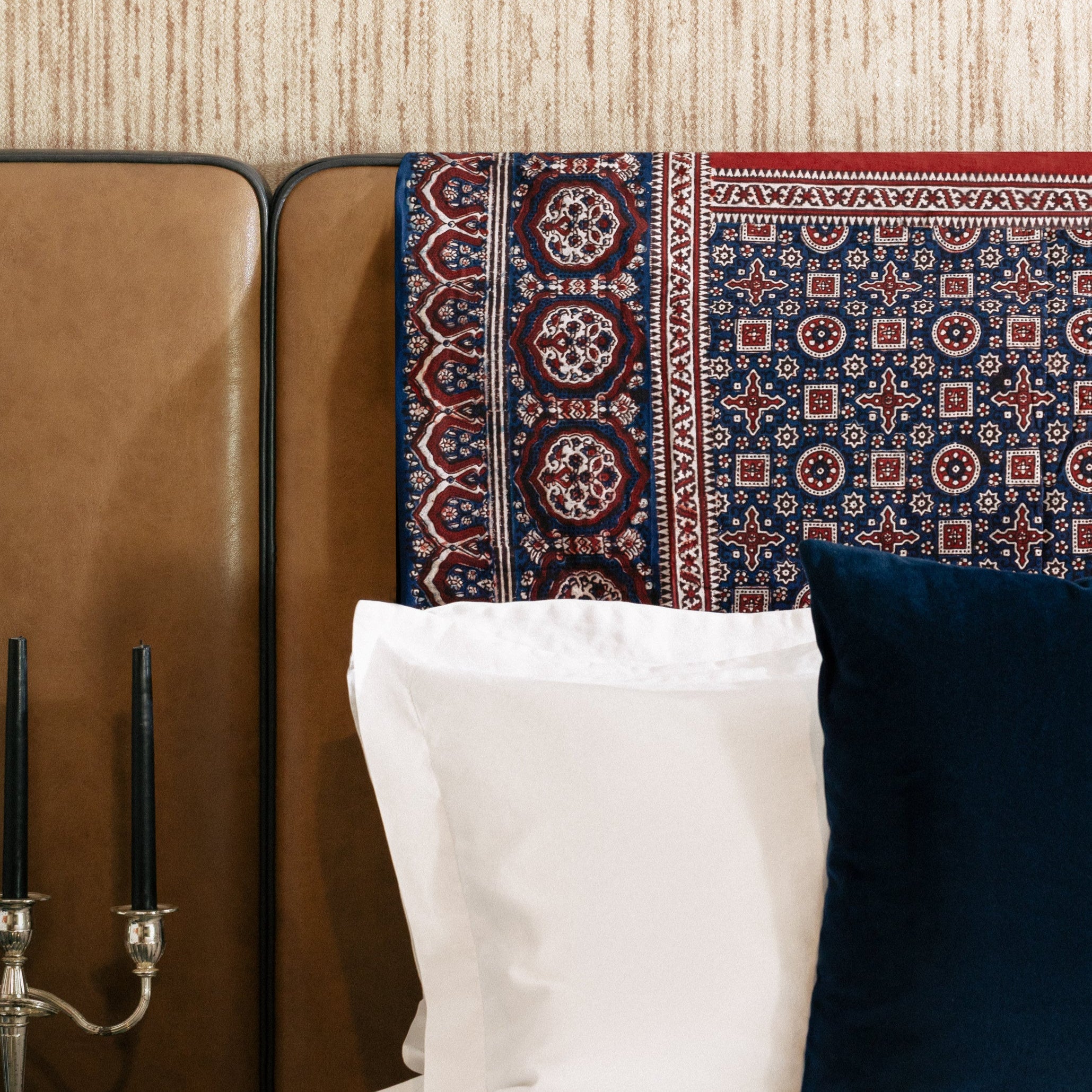
The Story of Ajrak: Centuries-Old Craft and Its Journey from Sindh to Modern Homes
When you unfold an Ajrak, you hold more than just a piece of cloth — you hold centuries of culture, artistry, and identity. This handmade textile from Sindh, Pakistan is one of the oldest and most enduring art forms in South Asia. Rich in geometric patterns, natural dyes, and artisanal techniques, Ajrak is more than fabric; it is a heritage that connects past and present.
Origins of Ajrak: A Craft Rooted in Sindh
The word Ajrak is believed to come from the Arabic word Azrak, meaning “blue,” a nod to the indigo dye that has been at the heart of this textile for centuries. Sindh, with its fertile Indus River plains, has been home to this art for over 3,000 years, as traces of indigo dyeing and block printing were found in the ruins of Mohenjo-daro.
Ajrak is not only a craft but also a symbol of identity. In Sindh, it is draped during celebrations, offered as a gesture of respect, and passed down as an heirloom. Every handmade Ajrak shawl carries with it the weight of history and the pride of community.
The Art of Making Ajrak: Handmade with Care
The process of making Ajrak is a slow and ethical art form, perfected over generations. Each piece takes weeks to complete and can go through up to 20 different stages of handwork.
-
Block Carving – Wooden blocks are hand-carved with intricate patterns.
-
Natural Dyes – Artisans use eco-friendly, plant-based dyes such as indigo, madder root, and henna.
-
Layered Printing – The fabric is carefully stamped by hand, aligning patterns with remarkable precision.
-
Sun, Water, and Patience – The cloth is washed, dyed, and dried multiple times under the Sindhi sun until the patterns emerge in deep reds, earthy blacks, and striking blues.
This is not just craft — it is artisanal storytelling, with each imperfection serving as the artisan’s unique signature.
Ajrak in Modern Homes: From Heritage to Contemporary Design
Today, Ajrak is no longer limited to traditional shawls. Designers, ethical brands, and conscious collectors are reimagining Ajrak in modern interiors and fashion. From table runners and cushions to scarves and framed textiles, Ajrak seamlessly blends into homes across the world.
-
In minimal homes, Ajrak adds warmth and depth.
-
As wearable art, it connects you to a heritage that values sustainability and community.
-
In gifting, an Ajrak piece represents timeless elegance and cultural respect.
Bring Ajrak heritage into your home — explore our artisanal collection at vasl.co.
Choosing Ajrak today is choosing heritage over fast fashion, artisanal over mass-produced, ethical over disposable.
In a world dominated by machine-made goods, Ajrak is a reminder of the beauty of handmade craft. Supporting Ajrak artisans means preserving centuries-old techniques, supporting ethical, sustainable livelihoods and bringing home a one-of-a-kind artisanal treasure.
At Vasl, we believe in honoring these traditions by connecting artisans of Sindh with conscious collectors worldwide. Every Ajrak piece tells a story of resilience, creativity, and timeless beauty.
Whether styled as a shawl, displayed as wall art, or placed on a dining table, Ajrak brings with it a sense of heritage, culture, and connection. It reminds us that true luxury lies not in mass production but in the handmade and artisanal — in the human hands that shape beauty from earth and dye.
Ajrak is not just cloth. It is memory, history, and identity, stitched together by artisans who have carried forward this art for generations. As it finds its place in modern homes around the world, it continues to remind us of the simple truth: heritage never goes out of style.
Every Ajrak carries centuries of heritage. Discover your one-of-a-kind handmade piece at Vasl.
